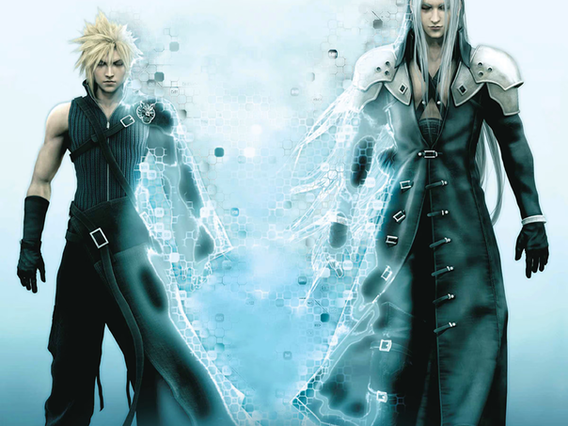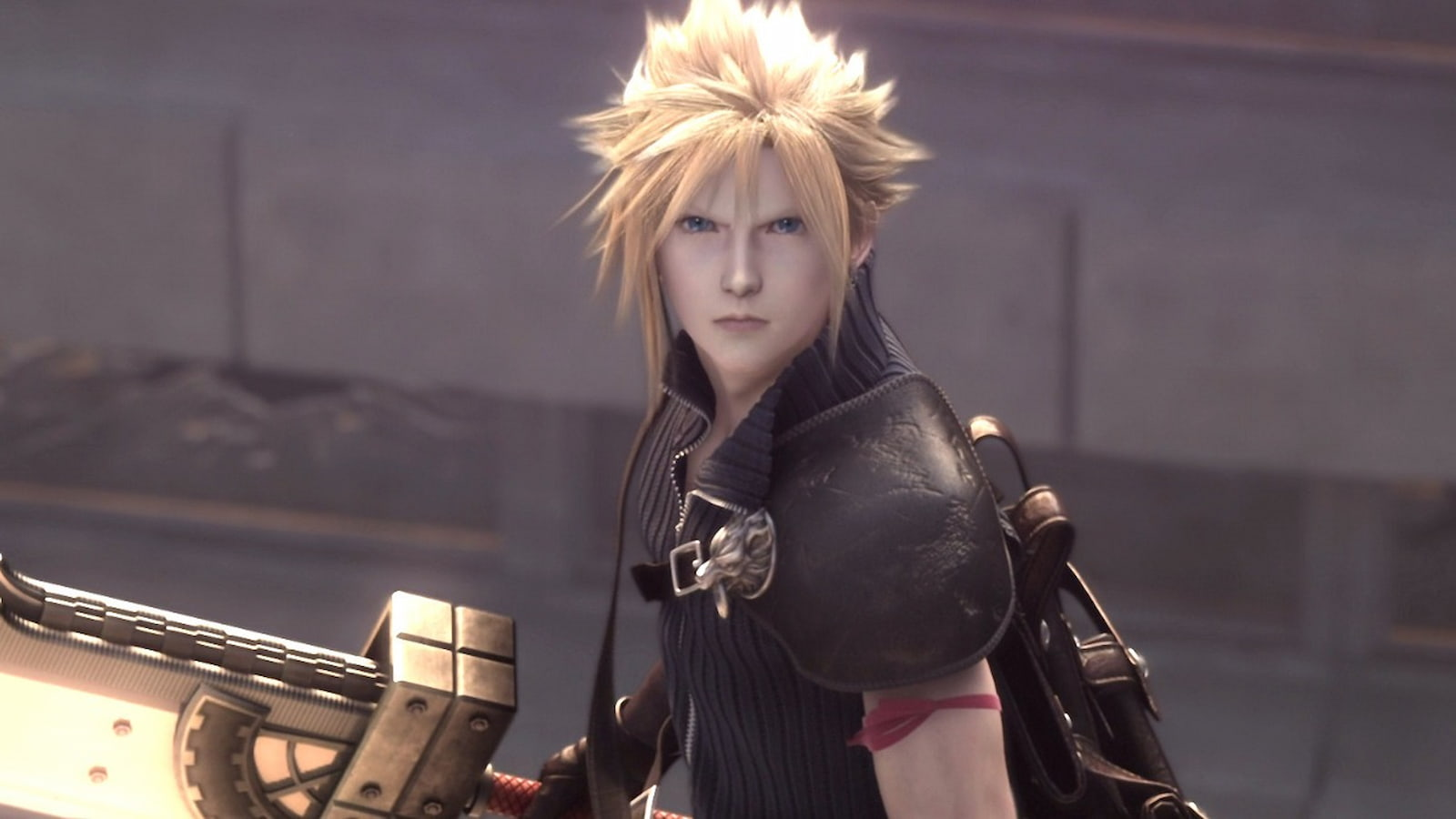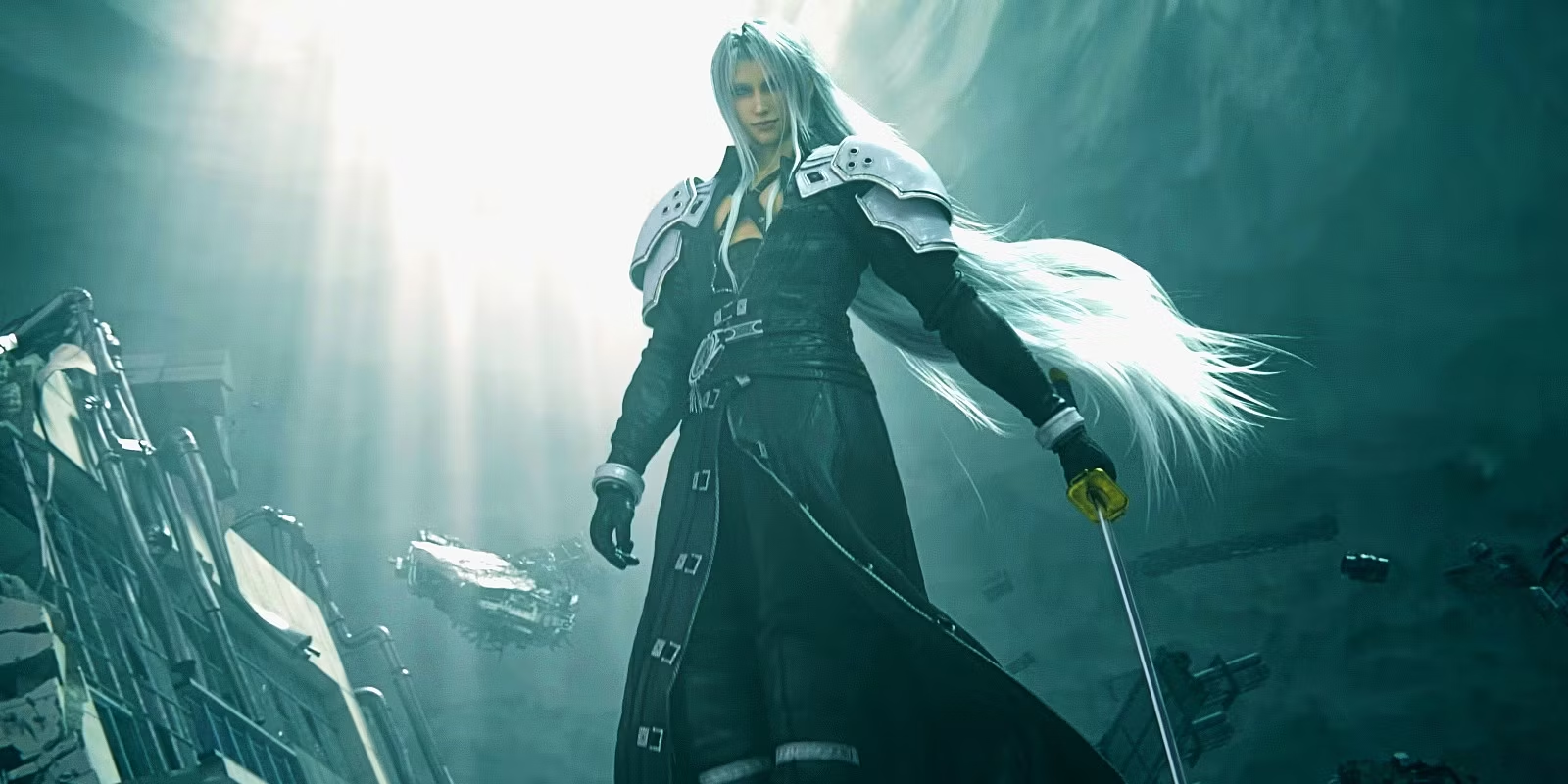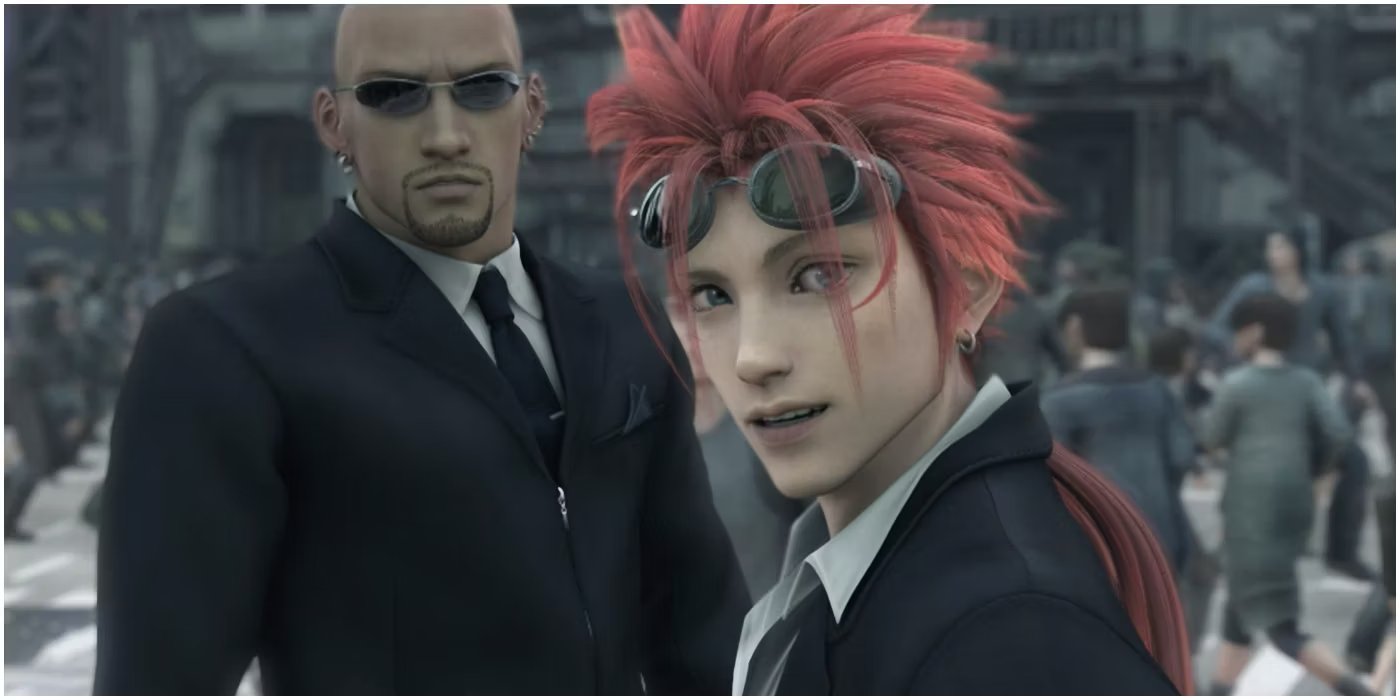Final Fantasy VII: Advent Children (2005)—A Visually-stunning, yet Soulless Cash-grab

In 1997, Square Enix came out with the seventh installment in their popular Final Fantasy role-playing video game franchise. The game had a fairly simple premise: you follow ex-SOLDIER Cloud Strife and his friends Tifa Lockhart, Barret Wallace, Aerith Gainsborough, Cid Highwind, Red XIII and Cait Sith to defeat the evil Sephiroth and Shinra Power Company to save the planet. Final Fantasy VII was extremely financially successful and became one of the most iconic installments within the Final Fantasy franchise. Due to this success, Square Enix decided to milk it to death with spin-off games, OVAs, a remake, and of course, a fully rendered CGI feature film.
Taking place a couple of years after the events of Final Fantasy VII, certain people of Midgar have been infected by an incurable disease called Geostigma, including Cloud Strife. Meanwhile, three physical remnants of Sephiroth: Kadaj, Yazoo and Loz awaken and plan to finish Sephiroth’s mission of bringing darkness to the world and reuniting with “mother” (Genova). After the Turks are attacked and Tseng and Elena go missing, Rufus Shinra hires Cloud to stop the three. Cloud initially refuses, but after Tifa is attacked by Loz at Aerith’s church and their adopted child, Denzel, along with Barret’s daughter Marlene are kidnapped, Cloud springs into action to save them.

Final Fantasy VII: Advent Children was initially a short animated film used as a testing ground for various CGI cut scenes in the games. However, Final Fantasy VII creator Tetsuya Nomura liked the short film so much he decided to create a full feature length film. Final Fantasy VII: Advent Children was created with the theme of the next generation in mind, hence the word “children” being included in the title. However, the film never really delves into this theme. While children such as Cloud’s adopted child Denzel and Barret’s daughter Marlene being front and center, they ultimately feel hollow as the center of focus in the film. This isn’t helped by the fact that it still feels like Cloud’s story, especially since the film heavily deals with his guilt originated from the events of Final Fantasy VII.
Speaking of the kids, I absolutely hate Denzel as a character. He offers nothing new, feels like a pain in the ass and the fact that most of his story was told off screen really doesn’t help ease him in as a major character. In a way, he feels like a surrogate for the audience, yet really doesn’t feel relatable enough to be an effective surrogate. Not to mention, why do we need an audience surrogate when we are supposed to see Cloud and his friends? Is it for the viewers who didn’t play the original game? But then why go the distance to needlessly explain exactly what happened in the introduction sequence?

This brings me to Cloud’s characterization in this movie. Now I understand that Cloud never was exactly a chipper guy, and especially considering his schizophrenia, thinking he made it into SOLDIER, whilst only being a lowly infantryman, he still had a level of charisma to him. Cloud in Advent Children, however, has no charisma, only unbearable levels of angst. Although it would make sense that Cloud would feel down since he failed to save Aerith and Zack, he saved the entire world, so I think he could forgive himself. Instead, he spends approximately half the film moping about, to the point where even Tifa gets annoyed with his incessant brooding! Not to mention that Aerith from the Life Stream even tells him that he doesn’t need to seek forgiveness from her or anyone but himself.
You can’t have a Final Fantasy VII movie without the mention of Cloud’s arch-nemesis Sephiroth. And although the iconic villain was frequently shown in the promotional material, he only appears in the third act. Instead, we get three physical personifications of his will: Kadaj, Yazoo and Loz. Each one of them embodies one of Sephiroth’s traits. Kadaj embodies his cruelty and insanity, Yazoo embodies his aloofness and Loz embodies his strong attachment to Jenova. But despite this, none of these three even come close to being as threatening or iconic as Sephiroth. In fact, they primarily come off as either annoying (in the case of Loz), unmemorable (in the case of Yazoo) or just plain pretentious (in the case of Kadaj). And even though Sephiroth does come back for a final fight, you ask yourself “why wasn’t he in the film earlier?”

Now I’ve been raving about what I didn’t like about this film for a bit too long. And if there’s one thing my parents taught me is that if you want to say something bad about something, you have to say something good about it too. And Advent Children does have its strengths, namely in its animation and CGI, wardrobe (with the exception of Cloud), music and action sequences. Tifa’s duster dress actually looks far more practical than her booty shorts and tight crop top from the original game. Not to mention that Barret’s new arm-gun looks much more badass and can even turn into a fully functional prosthetic arm, although I’m not entirely on board with his new fishnet shirt. Onto the animation, this is probably one of the most breathtaking CGI anime films that I’ve seen at the time when I watched it. Every lock of hair and ripple of cloth or pebbled piece of leather easily looks as if it could have been real. Despite some mishaps with some of the characters’ facial expressions, it doesn’t detract from the film’s overall visual quality. And even though the film was made in 2005, the visuals still mostly hold up by today’s standards.
Last but not least, the music. My God, the music truly made the film feel much more cinematic and epic. Composed by Nobuo Uematsu, the score highlights Cloud’s feelings of guilt, sadness and hope. It remains true to the Final Fantasy VII games while also adding a bit of a modern spin. This can be seen especially during the action scenes, where the score takes on a more aggressive style, mainly using grunge and alternative rock with a subtle touch of techno, to even outright dubstep mixing. My favorite example of this has to be the track during the highway chase/fight scene between Cloud and the Remnants of Sephiroth. Not only was it intense and fast paced, but also turned my boredom to excitement for the second half of the film! Additionally, I really liked how the main themes of the characters were all modernized to some extent. From the church choir and electric guitars used in the iconic “One Winged Angel” to Tifa’s and Aerith’s themes being softer with an emphasis on the piano. Finally, we have Cloud’s theme, which makes heavy use of strings and woodwind instruments, painting an image of a peaceful summer afternoon in the hills. There is a popular saying that a picture can paint a thousand words, but I think that music can paint an entire story. And in the case of Advent Children, it certainly does!

Is this a good or bad movie? Well, that’s hard to say. While I certainly appreciate it more now than when I first watched it, it still commits a cardinal sin in my book, which is it relies on you, the viewer, to have played the game. And to that, I say, no, you NEVER have to either play a game, read a book or do any kind of prerequisite to enjoy a movie. If your film requires any of these to be understood or good, then your movie simply sucks. I never read any of the Lord of the Rings books to enjoy the films, so why should I have to play the Final Fantasy VII game to enjoy Advent Children? Despite having breathtakingly beautiful CGI, character design and music, the film’s core is rather hollow. All-in-all, Final Fantasy VII: Advent Children feels very much like an attempt at a cash-grab. It may look pretty, but without any substance to keep it afloat, all you’re left feeling is unfulfilled and frustrated.








